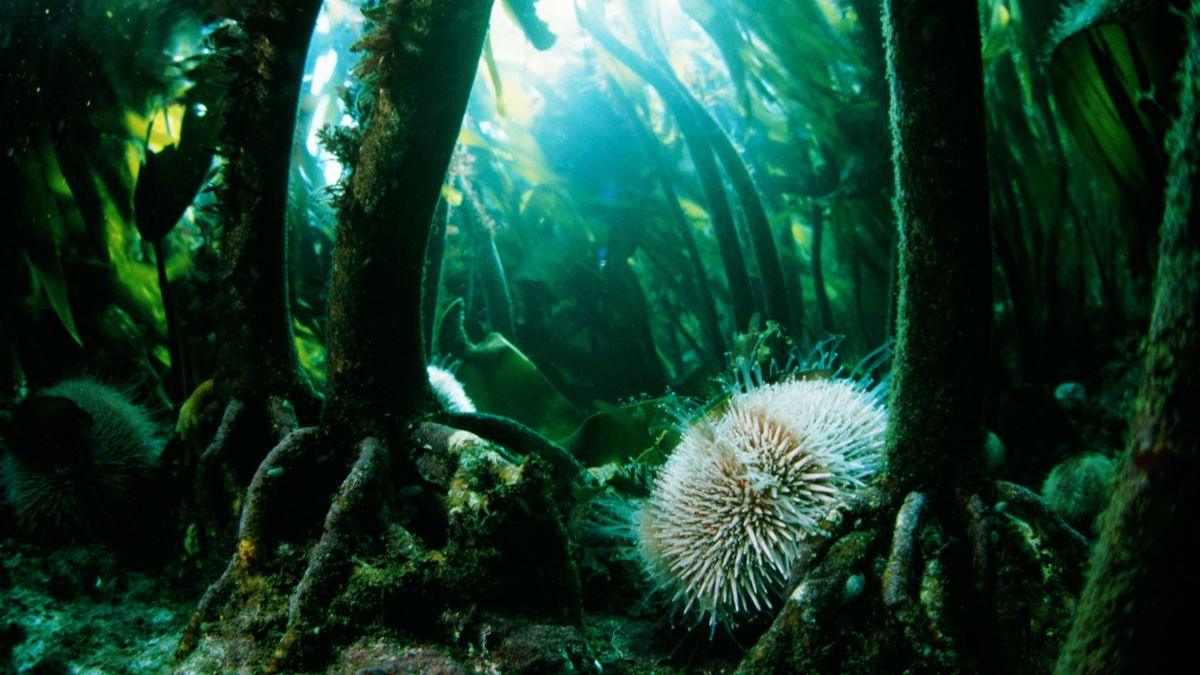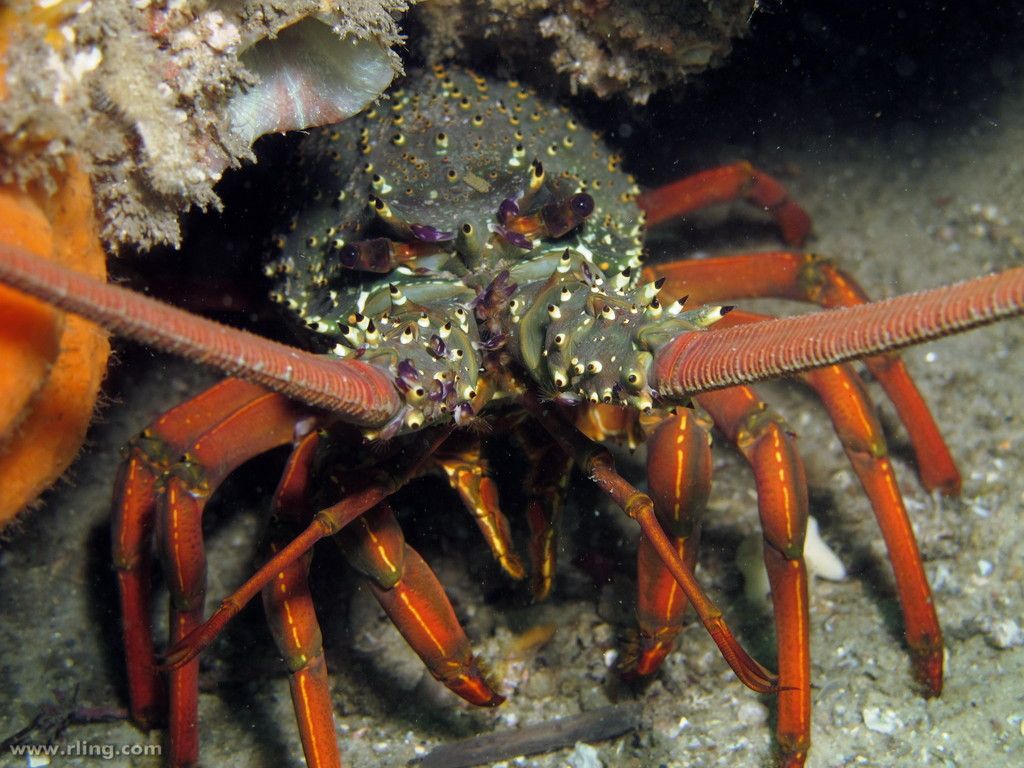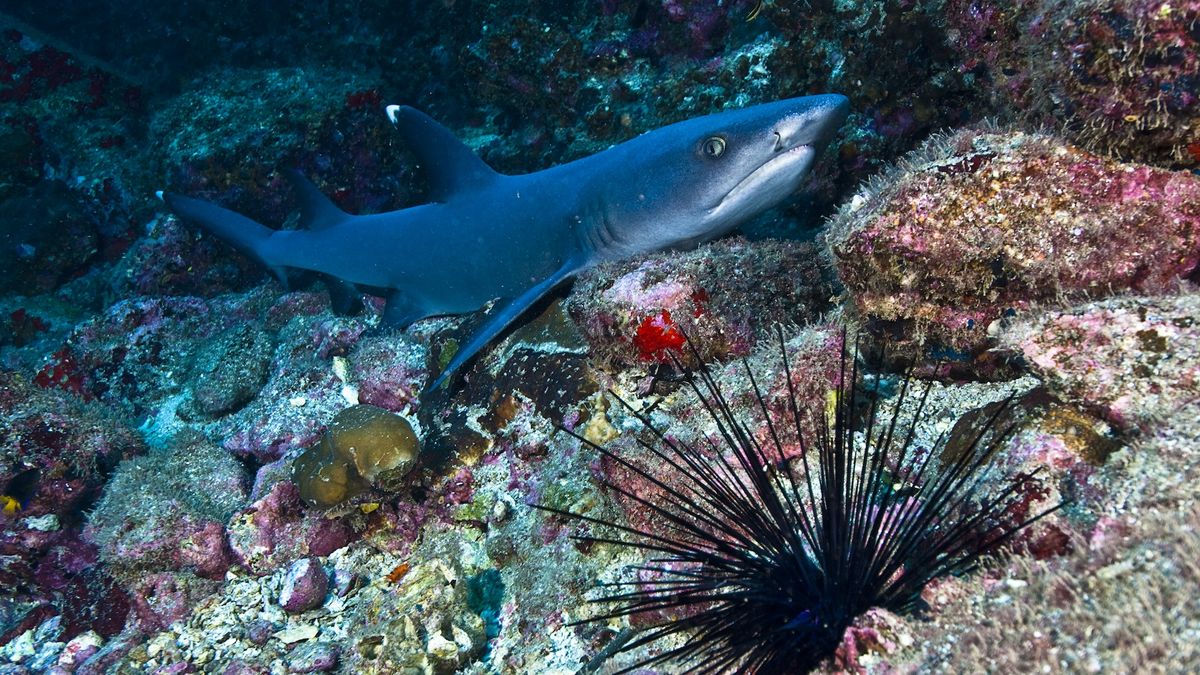
Long-spined sea urchins have emerged as an environmental issue off Australia’s far south coast. Native to temperate waters around New South Wales, the urchins have expanded their range south as oceans warm. There, they devour kelp and invertebrates, leaving barren habitats in their wake.
Lobsters are widely accepted as sea urchins’ key predator. In efforts to control urchin numbers, scientists have been researching this predator-prey relationship. And the latest research by my colleagues and I, released today, delivered an unexpected result.
We set up several cameras outside a lobster den and placed sea urchins in it. We filmed at night for almost a month. When we checked the footage, most sea urchins had been eaten — not by lobsters, but by sharks.
This suggests sharks have been overlooked as predators of sea urchins in NSW. Importantly, sharks seem to very easily consume these large, spiky creatures — sometimes in just a few gulps! Our findings suggest the diversity of predators eating large sea urchins is broader than we thought — and that could prove to be good news for protecting our kelp forests.
Related: ‘It’s like we opened a buffet’: Sharks in Gulf of Mexico learn to steal food from fishing nets
A puzzling picture
The waters off Australia’s south-east are warming at almost four times the global average. This has allowed long-spined sea urchins (Centrostephanus rodgersii) to extend their range from NSW into waters off Victoria and Tasmania.
Sea urchins feed on kelp and in their march south, have reduced kelp cover. This has added to pressure on kelp forests, which face many threats.
Scientists have been looking for ways to combat the spread of sea urchins. Ensuring healthy populations of predators is one suggested solution.
Overseas research on different urchin species has focused on predators such as lobsters and large fish. It found kelp cover can be improved by protecting or reinstating these predators.

In NSW, eastern rock lobsters are thought to be important urchin predators. The species has been over-fished in the past but stocks have significantly bounced back in recent years.
But despite this, no meaningful reduction in urchin populations, or increase in kelp growth, has been observed in NSW.
Why not? Could it be that lobsters are not eating urchins in great numbers after all? Certainly, there is little empirical evidence on how often predators eat urchins in the wild.
What’s more, recent research in NSW suggested the influence of lobsters on urchin populations was low, while fish could be more important.
Our project aimed to investigate the situation further.

What we did
We tied 100 urchins to blocks outside a lobster den off in Wollongong for 25 nights. This tethering meant the urchins were easily available to predators and stayed within view of our cameras.
Then we set multiple cameras to remotely turn on at sunset and turn after sunrise each day, to capture nocturnal feeding. We used a red-filtered light to film the experiments because invertebrates don’t like the white light spectrum.
We expected our cameras would capture lobsters eating the urchins. But in fact, the lobsters showed little interest in the urchins and ate just 4% of them. They were often filmed walking straight past urchins in search of other food.
Sharks, however, were very interested in the urchins. Both crested horn sharks (Heterodontus galeatus) and Port Jackson sharks (H. portusjacksonii) entered the den and ate 45% of the urchins.
As the footage below shows, sharks readily handled very large urchins (wider then 12 centimetres) with no hesitation.
Until now, it was thought few or no predators could handle urchins of this size. Larger urchins have longer spines, thicker shells and attach more strongly to the seafloor, making them harder to eat.
But the sharks attacked urchins from their spiny side, showing little regard for their sharp defences. This approach differs from other predators, such as lobsters and wrasses, which often turn urchins over and attack them methodically from their more vulnerable underside.
In fact, some sharks were so eager to eat urchins, they started feeding before the cameras turned on at sunset. This meant we had to film by hand.
A complex food web
Our experiment showed the effect of lobsters on urchins in the wild is less than previously thought. This may explain why efforts to encourage lobster numbers have not helped control urchin numbers.
We also revealed a little-considered urchin predator: sharks.
Lobsters are capable but hesitant predators, whereas sharks seem eager to eat urchins. And crested horn sharks are an abundant, hardy species that is not actively fished.
When interpreting these findings, however, a few caveats must be noted.
First, sharks (and lobsters) are not the only animals to prey on urchins. Other predators include bony fishes, and more are likely to be identified in future.
Second, other factors can control urchin numbers, such as storm damage and the influx of fresh water.
And finally, it is unsurprising that we found a key predator when we intentionally searched for it by laying out food. Tethering urchins creates an artificial environment. We don’t know if the results would be replicated in the wild.
And even though we now know some shark species eat sea urchins, we don’t yet know if they can control urchins’ numbers.
But our research does confirm predators capable of handling large urchins may be more widespread than previously thought.
This edited article is republished from The Conversation under a Creative Commons license. Read the original article.

